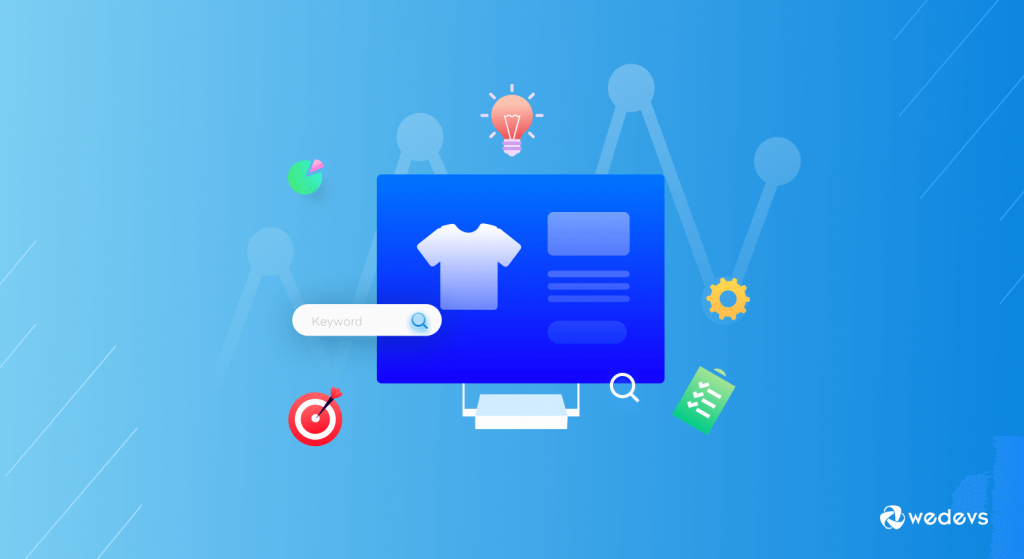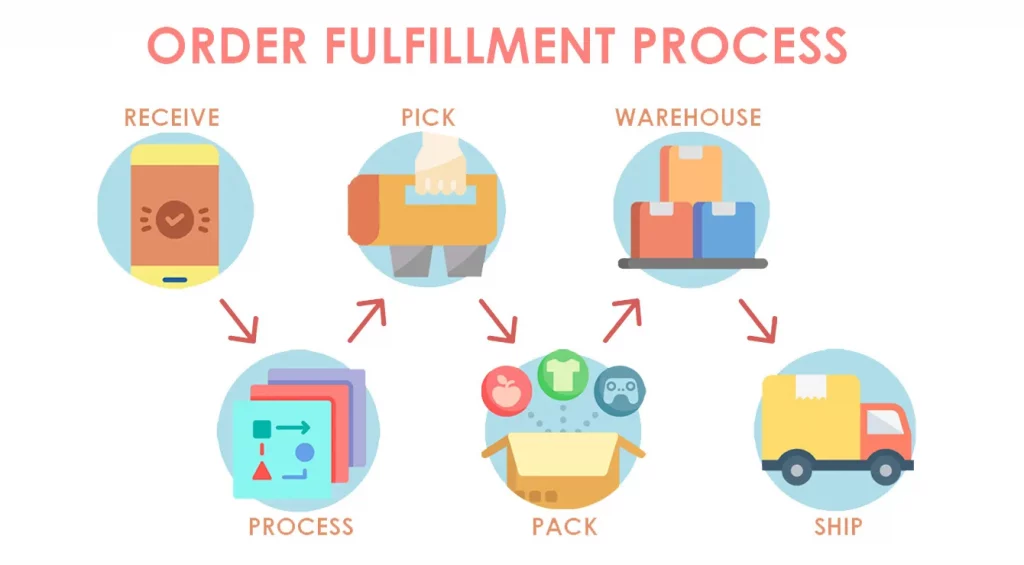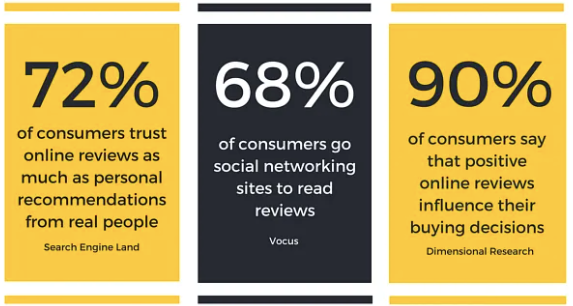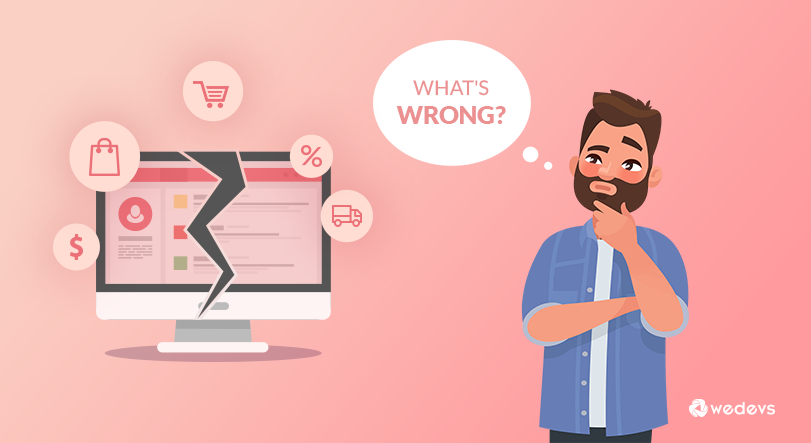
20 Do’s and Don’ts You Should Be Aware of While Running Your Online Business
Are you planning to start an eCommerce site or already running one? Then you should know about essential eCommerce dos and don'ts. It minimizes the mistakes you would make or reduce roadblocks to get success.
Right now, eCommerce is a buzzword around the world. Most people want to try their luck in this growing industry. Along with the chance of earning a great profit, this industry also comes with huge challenges. A single wrong step can cost a big disaster.
According to the latest research of Forbes and Huff Post- The two main reasons for failure are poor online marketing performance coupled with a lack of search engine visibility.
So, in order to get a smooth slope and mitigate the obstacles, proper eCommerce knowledge is a must.
In this post, we'll walk you through all the essential steps to elevate your business growth along with common mistakes as an online retailer you should avoid.
Let's get started.
5 Do's Before Starting An eCommerce Site
- Research Your Products
- Make Your Site Secure
- Plan for Organized Order Fulfillment
- Set Your Marketing Budget
- Test Before Your Site Goes Live
Below are 5 important approaches you should consider in the planning stage of eCommerce business-
1. Do Research Your Products

Before starting any business, detailed research is extremely important. Turning your personal passion into a profitable business is undoubtedly a good idea. But when you intend to do it professionally you need to calculate many things.
For example, some products are seasonal. Depending on the time of year, the demand for these products rises or dips. It may pose a great challenge for inventory control. You must have the proper knowledge and backup plan to deal with all the evolving circumstances. So, it can be a threat to your business's sustainability.
Special tip: Start following people on social media with expertise in a product that interests you. This is evidently a hands-off approach in your product research that helps you understand your product's real value, forecast possible challenges, and identify viable solutions.
2. Do Make Your Site Secure
An eCommerce website deals with many sensitive data like credit card information, money transaction, etc. As an online shop owner, it should be your topmost priority to keep your site secured from hackers and other types of vulnerable issues.
A recent study found eCommerce the most vulnerable industry as it experiences 32.4% of cyber-attacks annually in various forms.
Every day hackers create new traps to victimize noob people. Be aware of them and take precautions to avoid any unwanted situation. Otherwise, you may lose your customers' credibility which leads you to a profitless business.
Special tip: Get an SSL (Secure Sockets Layer) certificate for your eCommerce site. It establishes a secure connection between the server and users. Now, SSL is mandatory for any website receiving sensitive user information such as credit card details.
Read more: 10 Proven eCommerce Security Tips to Bulletproof Your Online Store.
3. Do Plan for Organized Order Fulfillment Process
Having good products is not enough to create a loyal customer base. Before launching your eCommerce site, build an efficient way to complete the order fulfillment lifecycle. This path defines all the tasks of assembling the order and shipping it off to the customer along with other supporting activities to complete the order.

Major steps of order fulfillment include strategic sourcing, inventory management, supply chain management, order processing, quality control, shipping, and customer support.
Special tip: Integrate a powerful ERP system inside your business. It helps you track end-to-end activities like orders, inventory, and other metrics of your business. A WordPress plugin like WP ERP brings all the essential data right to your dashboard. You can manage your entire business including order fulfillment, customer relationship, finances, and human resources with this one-stop solution.
4. Do Set Your Marketing Budget

A marketing budget helps you balance expenditure and ROI. No matter how good your products or services are, your customers need to know about your brand first. And marketing is the best way to spread your brand voice. In modern times, you can say more specifically that digital marketing is foremost important for your growth.
There are several ways to promote your eCommerce products. New online retailers may overwhelm by so many options and invest in the wrong place. Therefore, craft a budget first before starting your eCommerce and spend money wisely.
Special tip: While allocating the budget for eCommerce marketing it would be better not to put all your eggs into one basket. You better spread the investments across different marketing channels and strategies. So, you can easily measure the effectiveness of a business strategy and retrieve it quickly if any strategy fails.
5. Do a Test Before Your Site Goes Live
A proverb goes that the first impression is the last impression. After coming to your shop if people find any design is broken or any process is not responded to properly it may harm your reputation. They might lose their trust in you as well. For a new business, it could be a reason to shut down.
On your local site, check each and every step from proofreading to testing performance.
Special tip: Set a soft go-live test two weeks before the real go-live. So, stakeholders can go through the site and check everything. It'll identify if there is still any issue to solve or scope for improvement.
5 Dont's Before Launching An eCommerce Site
- Use Poor-Quality Product Images
- Duplicate Product Description
- Include Vulnerable Payment Gateways
- Complicate the Checkout Process
- Forget About Your Calls to Action
Check the 5 practices you should be aware of before making your eCommerce site live-
1. Don't Use Poor-Quality Product Images
In a physical shop, buyers get a tactile experience by touching the product or sometimes seeing the demonstration. For an eCommerce store, things are quite different. As an eCommerce owner, you should include related product images from different angles to make the description attractive. It creates a long-lasting impression on your buyers.

Plus, high-quality images elevate a prospect's desire to buy a product. On the other hand, low-resolution images may ruin your brand reputation as well as set a question mark on your products' quality. For example, above you can see two images of the same camera. And undoubtedly anyone will go for the right one.
2. Don't Duplicate Product Description

For a faster solution, many online retailers just copy product descriptions from other sites. It seems an easy solution when you're selling similar types of products. But it could be a great threat to your authenticity. Remember, before buying a product buyers usually visit all your competitor sites along with your one.
Therefore, make yourself unique and trustworthy by giving exclusive and honest reviews on products. This practice helps you position yourself as an authority or expert in your field. Unplagiarized content is also essential to rank better on search engines.
Read More: How to Write eCommerce Product Description that Sell (Ultimate Guide).
3. Don't Include Vulnerable Payment Gateways
A secured payment gateway is one of the crucial elements to make your eCommerce trustworthy. During purchasing online, customers are concerned about unreliable payment methods, lack of privacy, and abuse of personal information.
However, in order to cover a board customer base, it requires having multiple payment systems on your eShop. Choose payment methods that instill trust in your consumers. Also, establish a safe transaction way to accept money from directly a bank or using debit & credit cards.
Some popular eCommerce payment gateways are- PayPal, Stripe, Skrill, 2Checkout, etc.
4. Don't Complicate the Checkout Process
Now, people want a quick solution to their problems. The more lengthy you make the process to purchase on your shop the rate of cart abandonment will increase. According to Baymard Institute, 69.82 percent of shoppers abandon their carts. And a major reason behind this is the complicated checkout process. Improve your shopper experience by introducing easy navigation from one purchase stage to the next without distractions.
Read more: How to Create an Effective Checkout Flow for Your eCommerce Business.
5. Don’t Forget About Your Calls to Action

An optimized “Call To Action” motivates a customer to act as per their desire. After a visitor landing on your eCommerce site, you want them to have a pleasant experience and take some specified action before they exit your site.
For eCommerce, the action could be to place an order, check discount items, sign up for a newsletter, share on social media, add to a wishlist, and others. Without CTAs people may be wandering your site aimlessly and could not make any fruitful decisions indeed.
Read More: Why eCommerce Businesses Fail & How to Resolve Them.
5 Do's After Launching An eCommerce Site
- Personalize Your Customer Journey
- Collect Customer Feedback
- Evaluate Your Site Performance
- Promote Your Online Store
- Make Your Support Team Ready
Get into the essential metrics an online shop owner should take care of-
1. Do Personalize Your Customer Journey
In modern times when people can buy any product or service from almost anywhere in the world, eCommerce becomes so competitive. For long time sustainability, you must ensure a great customer experience.
According to research from McKinsey and Company, customers now view personalization as the default standard of engagement.
Personalized customer service is about serving people as individuals. It helps you make your potential customer journey remarkable and move them into the next stage of the sales funnel. This approach leads to increasing conversion rate as well as customer retention.
Special tip: Make your customers feel special by setting up a seamless communication medium. For example, let them move the conversation from one medium to another if required or connect them with a customer service agent who is precisely expert to resolve their problems.
2. Do Collect Customer Feedback
Constructive customer reviews have two key benefits for your eCommerce growth. First, it gives you an idea about what you’re getting wrong or right. And second, people love to hear from real users before buying. It boosts their confidence.

Customer feedback lets you understand your customer's pain points, how they perceive your brand and products, and their overall experience with your service. By including a customer testimonial on your eCommerce, you can easily minimize your customer acquisition cost as well as create more loyal customers.
Special tip: Conduct an eCommerce customer feedback survey to gather customer reviews from both current buyers as well as potential ones. Using this feedback to update your future strategies and upgrade product features.
3. Do Evaluate Your Site Performance
Never just imagine that everything is going well. Currently getting good sales doesn't mean the situation will be unchanged forever. With time it requires updating your strategies. Otherwise, competitors will outpace you in long run.
As an online retailer, you should analyze and keep track of your website's performance so that you can improve it when requires. For example, you're adding new products with related attributes on your site almost every day. Gradually it makes your site heavy. Plus, the number of customers is also growing day by day. Knowing about your customers' changing demands and keeping your site easily accessible for them should be always your priority.
Special tip: Use an analytical tool like Google Analytics to get an idea of how many users visit your website, where they come from, how many times they visit, how long they stay, and so on. It helps you to identify the most used channels and optimize them.
4. Do Promote Your Online Store
You have an amazing site design, super fast loading speed, and excellent products, but no TRAFFIC. Your all efforts will go in vain. Besides having useful products you need to tell your target audience about your products as well. The most effective way to do this is to market your eCommerce site.
Customers are always difficult to engage – a study shows that the average cart abandonment rate is 69.2%. It requires effective marketing tactics and tools to reach your audience and improve sales. Alternatively, too much marketing may irritate your customers. The right marketing approach drives traffic to your online store, converts that traffic into loyal customers, and retains those customers post-purchase.
Special tip: Optimize your eCommerce site for search engines. It increases your online visibility and chance to get more traffic.
5. Do Make Your Support Team Ready

Sending products to customers' doorsteps doesn't end your duty. After-sale service works as a crucial factor to create happy customers. Moreover, you need a skilled team to elaborate on your product's usability and convince people to buy.
According to Forbes, 83% of online shoppers need assistance to complete an order. After landing on your store, a customer can seek support to make an informed decision. Such as your customers may want to enquire about your product. If you fail to give prompt customer support to their needs, you may lose them forever.
Special tip: Integrate a live chat feature into your eCommerce store. eCommerce live chats allow customers to do real-time conversations with an agent or a bot. So, they get more confident about purchasing and rely on agents to solve their issues.
Read more: Importance of Customer Service in eCommerce Business.
5 Dont's After Launching An eCommerce Site
- Make False Promises
- List Products You Do Not Sell
- Edit Your Negative Reviews
- Stick with One Strategy
- Lose Hope So Quickly
Let's show you the activities that would be harmful to your online shop-

1. Don't Make False Promises
Never make promises to your users that you can't keep. Breaking promises can be a great threat to your brand reputation and trustworthiness. But it doesn't mean you should stop making promises to your customers. Since constructive promises boost your prospects' confidence to act in your desired way. And once you would able to fulfill it, the level of customers' happiness also increases.
2. Don't List Products You Do Not Sell
Sometimes, online retailers add trendy products to sites only for driving customers' attention. It's a very bad practice. This type of approach can annoy your potential customers and you may lose them forever. Better invest your time to showcase your real products more attractively. It returns you better profit with loyal customers.
3. Don't Edit Your Negative Reviews
After even giving your best and following all the strategies you can't make all the customers happy. Rather than delete or modify the bad reviews you better reply promptly to protect your brand reputation. Try to understand their point of view and suggest proactively to their issues. Be polite to your customers and if required ask for apologies. And later use these reviews to update your products or services.
4. Don't Stick with One Strategy
Everything is changing rapidly around the tech world. It makes eCommerce more challenging. And as an entrepreneur in a competitive market, you should come up with new trends, update strategies regularly, modernize your shop, and explore new functionality. Remember, an excellent feature also loses its appeal after a certain time period if it's not updated with the required enhancements.
5. Don't Lose Hope So Quickly
As you know and we've also said several times, it's extremely tough to make your unique identity inside the eCommerce industry. According to the latest research, 90% of e-commerce start-up businesses end in failure within the first 120 days. Does this mean you shouldn't enter this business? Of course not. Rather the benefits of selling online can far outweigh the challenges. The thing is you have to keep patience and consistency to bring success in this field.
10 Dos and Don'ts for eCommerce at a Glance
| 10 eCommerce Dos | 10 eCommerce Don'ts |
| Research Your Products | Use Poor-Quality Product Images |
| Make Your Site Secure | Duplicate Product Description |
| Plan for Organized Order Fulfillment | Include Vulnerable Payment Gateways |
| Set Your Marketing Budget | Complicate the Checkout Process |
| Test Before Your Site Goes Live | Forget About Your Calls to Action |
| Personalize Your Customer Journey | Make False Promises |
| Collect Customer Feedback | List Products You Do Not Sell |
| Evaluate Your Site Performance | Edit Your Negative Reviews |
| Promote Your Online Store | Stick with One Strategy |
| Make Your Support Team Ready | Lose Hope So Quickly |
Check All The Dos and Don'ts To Build a Successful Online Business
So, you're up to creating a successful online business. You must overwhelm by reading hundred of profitable strategies and want to apply all of them on your site. Since every strategy has plenty of benefits along with some limitations. Proper understanding is required to promote your brand in the right way.
For example, having a secure site is a must for any type of eCommerce business. But digital product owners can overlook the strategy related to the physical shipment process. Whereas some businesses can't afford a negative review. In that case, you have no other choice except to delete them.
However, if you want to make money by selling online, you don't have to be a tech person. You just have to follow some proven strategies and avoid common mistakes. Get through all the points we've mentioned above. It helps you make a roadmap to move forward minimizing errors.
Still, have any confusion about eCommerce dos and don'ts? Do let us know in the comment section below.